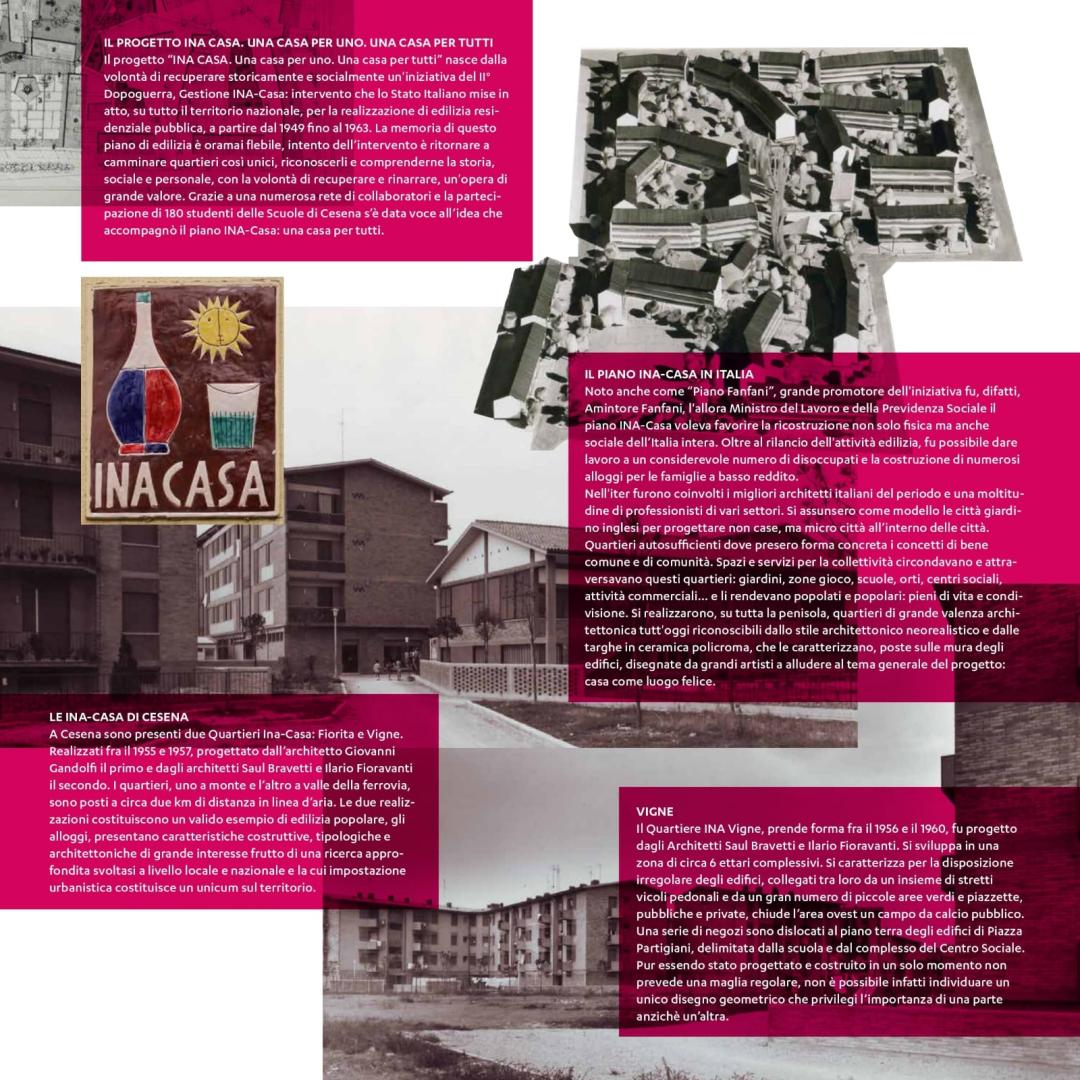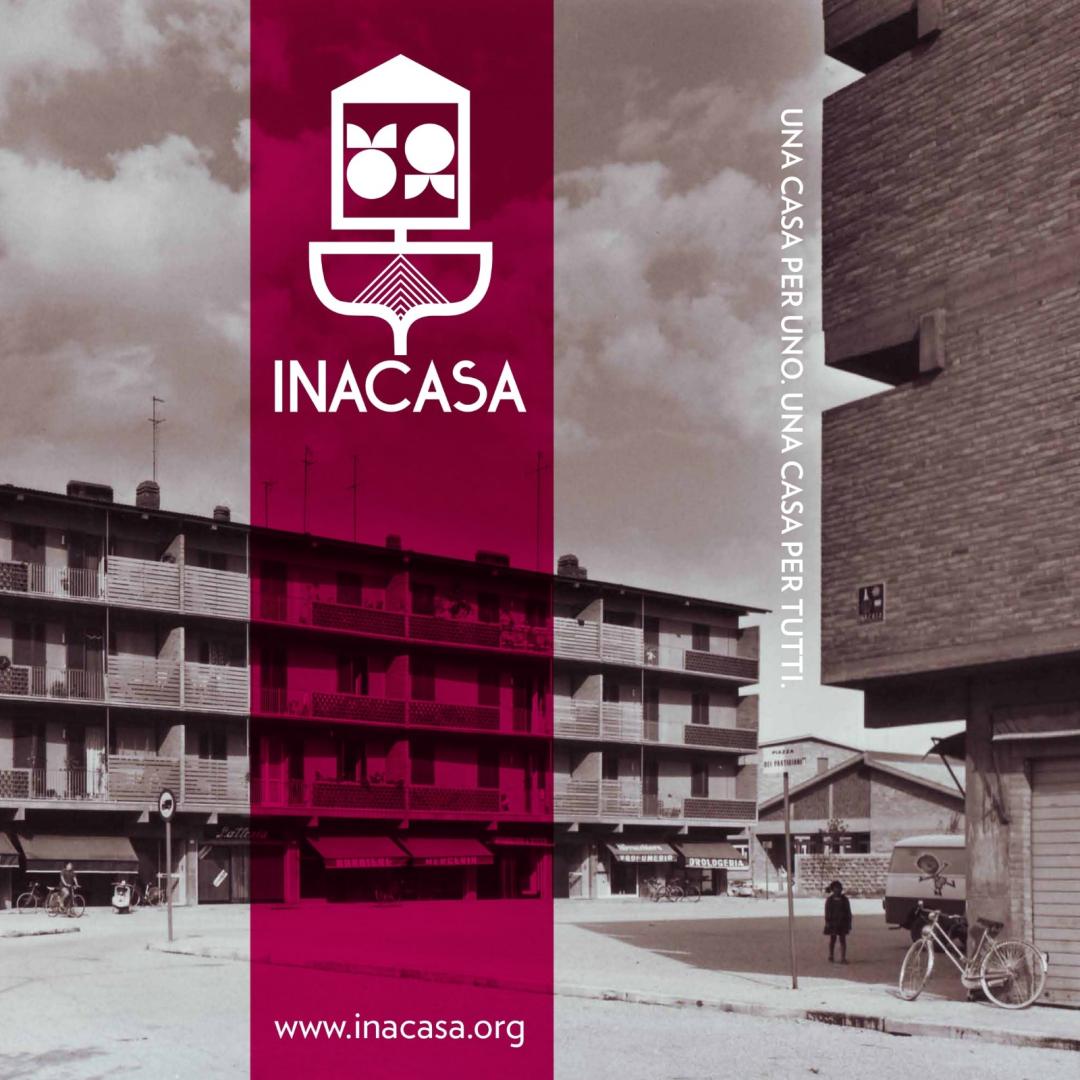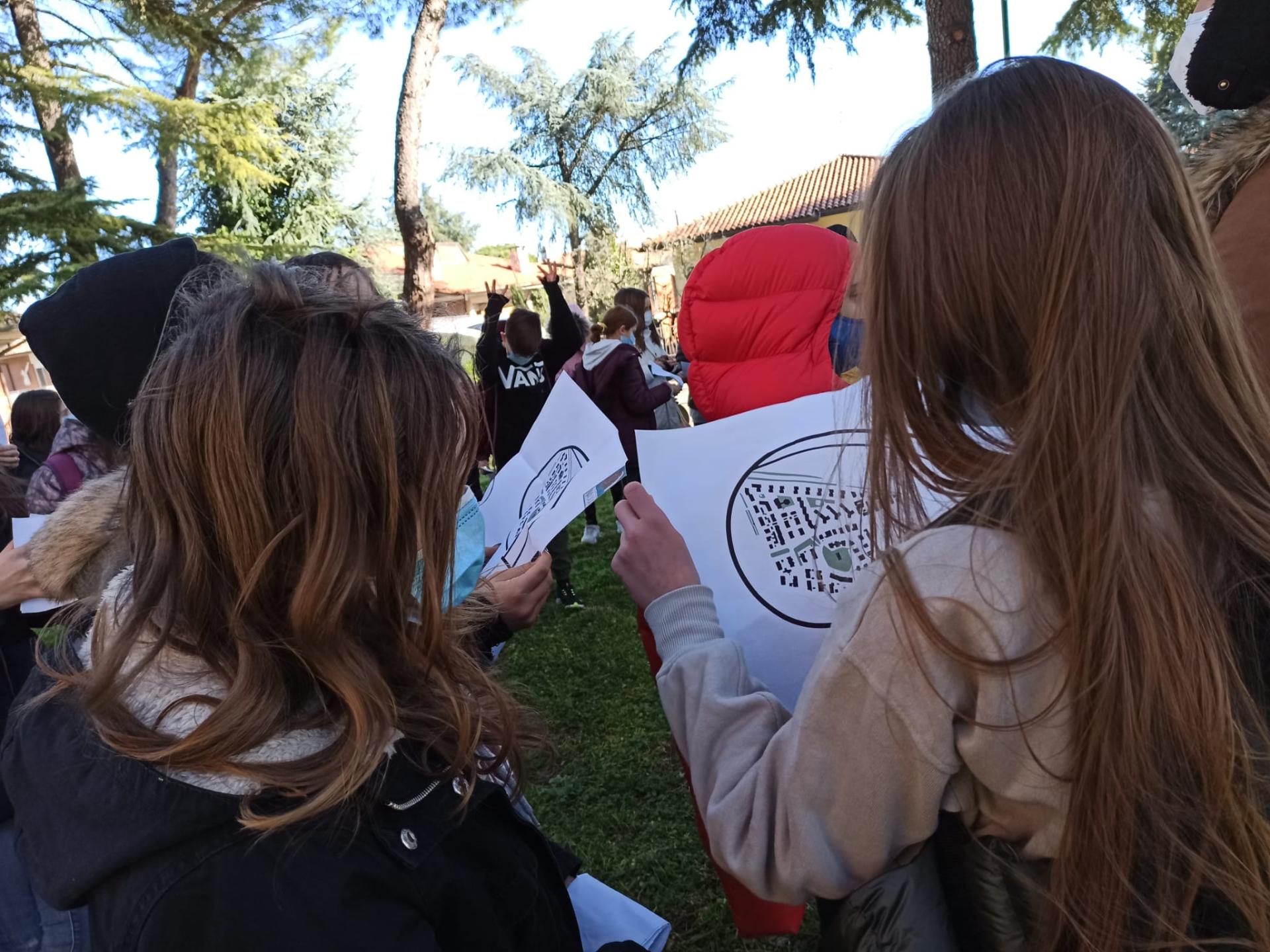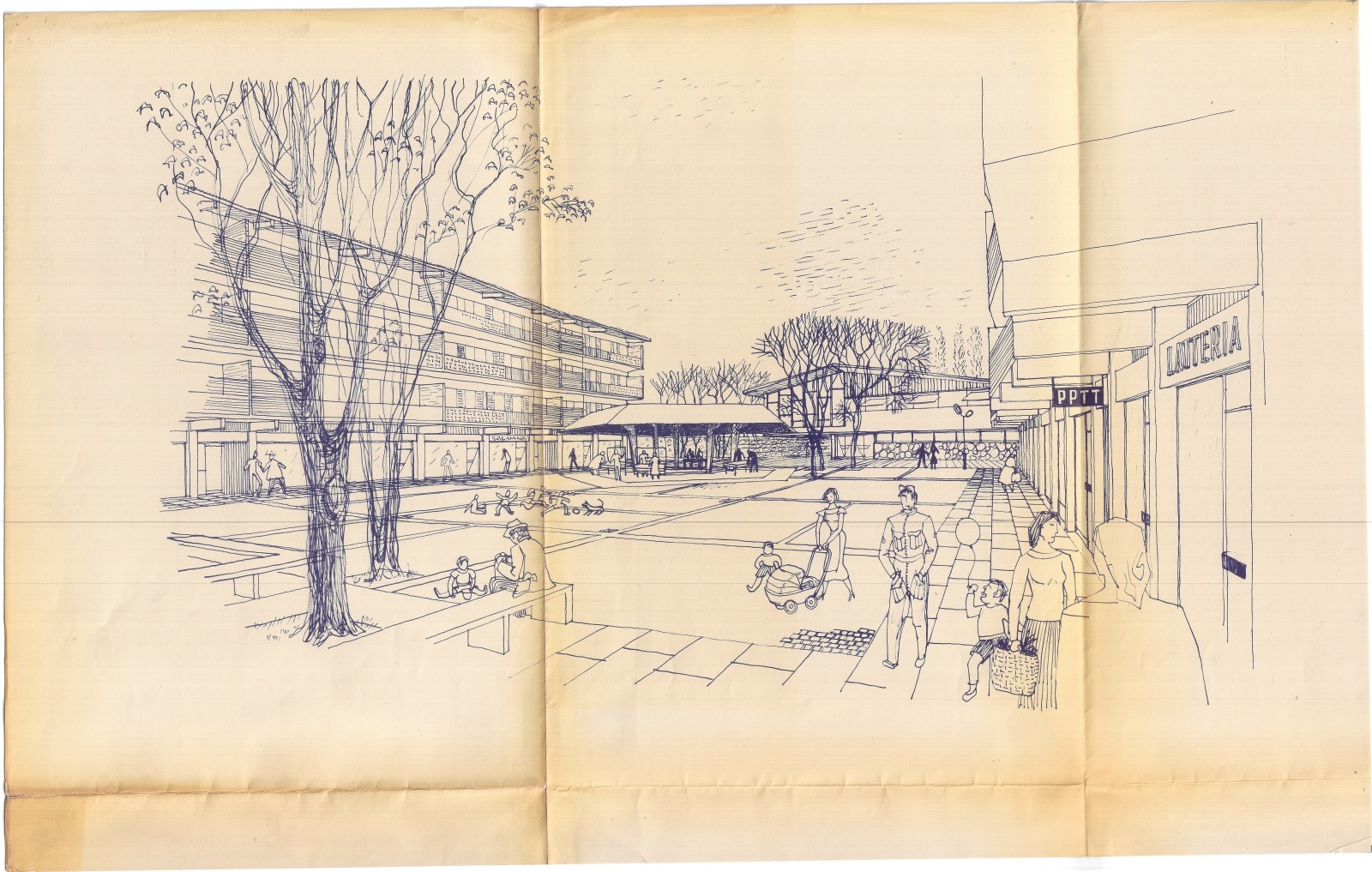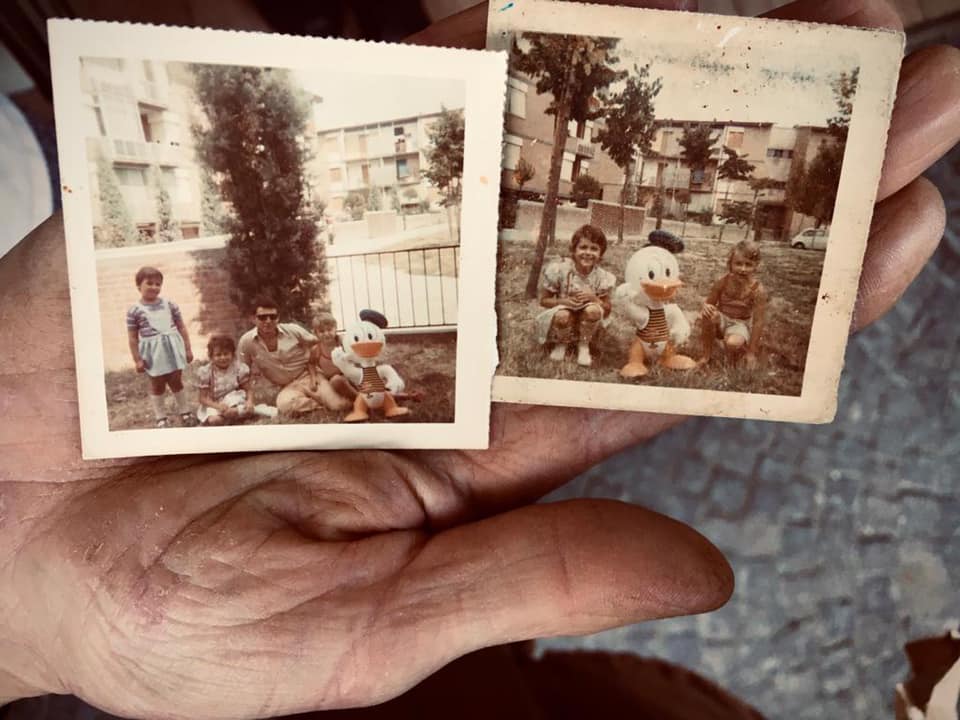INA CASA
Basic information
Project Title
Full project title
Category
Project Description
Ina casa is an urban regeneration strategy for the new generation(ages 7-18). It was born from the desire to historically and socially recover an initiative by the State immediately after II World War and diffused all over Italy: INA-Casa. The intention is to rediscover these unique neighborhoods, to understand their history, both social and personal, and in so doing, lay the foundations for a future made of inhabitants of active spaces who are aware of the value of community and the common good
Project Region
EU Programme or fund
Description of the project
Summary
AIDORU created the project with the objective of regaining awareness of the characteristics of unique neighborhoods. The desire to recover and regenerate a work of great value, first of all in an immaterial way, gave rise to interviews of the inhabitants to better understand the social history and individual stories within each context. Through an emotional and participatory regeneration, we were able to give voice to these micro cities, still inhabited, but forgotten by the communities, thereby laying the foundations for a future of inhabitants who are aware of the value of community, capable of working towards the conservation of the common good and with the ability to rediscover historical memories to imagine better future scenarios. The project was carried out in Cesena in the Vigne and Fiorita neighborhoods, starting from autumn 2020 and ending in March 2021, thanks to the support of the Cultural Heritage of the Emilia-Romagna Region. About 250 students from a summer school and 3 primary and secondary institutions were involved in activities of narration, exploration and planning of the neighborhoods. The entire project enhances the Vigne and Fiorita neighborhoods and makes both citizens and students aware of the importance of the design experience they constitute at a local and national level. Additional beneficiaries of the project were the residents themselves who, through their eyes, interviews and re-elaborations of the works proposed by the classes of students involved, rediscovered the historical value of the place where they live, as well as the peculiarities and advantages (even forgotten) of these architectural and social contexts. Built between 1955 and 1957, the neighborhoods are located at a distance of two kilometers and can be easily covered by groups on foot. To guarantee a further democratic and inclusive tool of learning for all, the website inacasa.org was created.
Key objectives for sustainability
From 2002 AIDORU works to produce performance-related projects linked to the world of innovative art forms around the theme of urban landscape. It implements interventions for the enhancements of places in a state of “abandonment” and activates regeneration processes through cultural actions. The project develops awareness of environmental sustainability in terms of mobility and urban regeneration. The routes were carried out on foot, raising awareness of the opportunities to move in a sustainable way and to experience the city in a green way. The Sustainability Education Center and the FAI amplified the potential of the project. The workshop materials were products of reuse, and generally discarded materials. The use of QRCodes allowed accessibility even to those who were unaware of the project, avoiding use of paper. The rediscovery of neighborhoods, considered one infamous and the other uninhabited,was aimed at increasing the livability of these spaces with the reactivation of a collective and safe use in the Covid era. Our project was sustainable thanks to our network, organized in a discussion roundtable with municipal sectors of Culture/Services for People/Urban Regeneration, with local organizations, city archives and informal associations of residents, expanding to different target audiences. The Integration with RER and HUB Usi Temporanei for the dissemination and systematization of all practices augments the feasibility of the project. The collaboration with ACER, which manages most of the social housing structures in the two neighborhoods, was a guarantee of sustainable practice.The re-narration (both formally through the archives, lectures by university professors and architects, and informally through the stories of the residents) led the new generations to better understand the complexity of the surroundings, developing critical and artistic reflections towards the sustainable development of the urban context as stipulated by the Green Deal.
Key objectives for aesthetics and quality
Over the years Aidoru has developed specific methodologies allowing different disciplinary fields to interact, favoring the intertwining of knowledge such as architecture, education, oral history, performing arts and civic design. The practices are based on an indispensable transversality whose articulation in interacting specific skills is one of the key-skills of the proposing group. Chief among the aesthetic and ethical objectives is increasing the general quality of the neighborhood’s public spaces and re-activating diverse forms of collective use and new spaces for safe socializing in the Covid era. Contemporaneity is involved in the issue of housing quality, enhancing a historical model and divulging characteristics and questions that are still current. The project focuses of the participatory re-functionalization of public areas, allowing these, now interstitial, to take on a new centrality and rediscover their original function. The study of the buildings’ exterior and the plaque system aims to give them new value and spread awareness of their role as a distinctive and iconic element of these neighborhoods. This work has led to overcoming the stigma of the “suburbs” and the “public housing”, using the codes of contemporary arts to re-semantize the context, expanding the overall vision between individual, neighborhood, city. The classes designed the pedestrian underpass that connects the two neighborhoods to produce a long-term visual memory and to encourage the interests of passers-by, making it safer and more pleasant, removing it from its current neglected state thanks to the support of the Municipality. An informative signage project was prepared by students as a gift to the neighborhoods. The creation of a graphic design elaborated on sketches made by children and residents’ suggestions, included in the QrCode, docufilm and website, sought a highly personalized common aesthetic that fits into the rationalist aesthetic sense of the neighborhood.
Key objectives for inclusion
Thanks to the Emilia Romagna’s “Youth for the Territory” call it was possible to offer an inclusive and free of charge experience to schools (180 students), including materials. The project reached around 400 direct beneficiaries (residents involved, institutions, schools, university associations) and intercepted about 1,500 indirect beneficiaries (citizens, residents not actively involved, other associations, Inacasa online portal’s users).Digital inclusion was fundamental during the Covid emergency: the digital sharing of content through QRcode’s posting in the two neighborhoods opened the project to residents not actively involved, other neighborhoods’ residents, tourists, and the website allows a potential internationalization. Aidoru worked side by side a network of collaborators in a horizontal logic of exchange and mutual learning. The use of open spaces rendered the processes visible and transparent, intercepting the dynamics of everyday life and increasing the possibility of engaging the target. The sense of belonging within the resident communities was strengthened through inclusive and aggregative practices, constructing a participatory archive of local memories and housing histories, enabling the local community to self-determination in terms of its own cultural representation. By investing social infrastructures and their cohesion, involving the territory and widespread knowledge, an inclusive and open system of learning was created, increasable from the grassroots and oriented to the past as well as the present and future. The materials collected by the residents and those created by the students (drawings, ceramic constructions, interview recordings, explanatory road signs, proposals for the underpass regeneration etc) will be shown next Autumn in an outdoor installation exhibition in the neighborhoods. The artifacts created by the students are for sale (free offer): the proceeds will go to their schools to finance future projects
Results in relation to category
The project has produced a broad multidisciplinary reflection on the theme of housing and living in search of new possible models to respond to the transformations taking place following the health crisis. Over the last year the spatial models have rapidly changed while the house has taken on a new although contradicting centrality. Resuming today the theme around which the INA experience was articulated (with the motto “Home as a Happy Place”) means interrogating ourselves on complexity, new uses and social norms, conceiving living as a decisive criterion for rethinking forms of ecology and city regeneration. The social and urban context was analyzed through inspections,interviews, community explorations, gathering material and immaterial evidence on the past and present states and making comparisons between historical surveys and those collected during the excursions. Subsequently the first hypotheses of regeneration, reuse and enhancement of common and private spaces were developed with the new generation through the creation of little architectural artifacts and the collection of ideas for urban and cultural actions, concrete and theoretical, aimed at first forms of narration and inhabitation of the place. This action has made the resident community an active protagonist of a story of the present and of self-narration, allowing the new generations to acquire greater awareness of their own living environment and bringing childhood memories back to life in the elderly. This methodology has managed to shine the spotlight on neighborhoods otherwise abandoned and devalued both by individuals and institutions. A fully achieved result is linked to the replicability of the project, with a strong investment in the future and its replicability given the capillarity of the INA districts throughout Italy. The experience, thanks to different communication methodologies, has stimulated citizens and associations from other cities to rediscover their popular neighborhoods
How Citizens benefit
The involvement of the population was due to a constant physical presence in the neighborhood by Aidoru and the new generations, speaking with the citizens and merchants, through word of mouth, testimonials on social media and constant updates in WhatsApp groups. A more formal modality, was through institutional channels, associations, municipal agencies, real estate agencies, also creating “On the way encounters”. The revaluation of the neighborhoods was born from a participatory process, the residents led the new generations on spaces’ discovery and anecdotes. The residents and the students have triggered peer education dynamics towards other classes of different school levels. The community and classes involved in the geo-exploration and other activities have themselves become ambassadors and amplifiers of the project with the institutions. The effect of this level of involvement was a re-evaluation of the suburban neighborhood and its story by residents who had removed (or decided to remove) the popular history of the neighborhood (in some walls of the houses the polychrome ceramic plaques were removed, plaques which made the INA CASA distinguishable from the others). A further effect was the creation of a new protagonism of the city thanks to the schools, the Department of Architecture UNIBO and the ERT Actors Company. Another impact was that of having reduced the gap between different generations and decreased the distance between the formal/theoretical teachings of the schools and the context in which they are inserted, of which students often ignore many aspects. Reducing the distances between people and the territory proved fundamental especially in the Covid emergency, a moment of abandonment of people with fragilities. An objective reached is to stimulate the neighborhood to become an educating community so as to activate new alliances between its various social actors, combining education and participation as founding elements of a territorial pedagogy
Innovative character
Our policy believes that, before a building regeneration, it is impertinent to make the inhabitants feel the need, or re-narrate the space, rediscover its shortcomings and positivity, activate an emotional bond and a widespread attention on space and the common good and, from the immaterial, head towards an eventual physical regeneration. The INA CASA are concrete examples of how much urban planning can affect the lives, social relations and emotional network between individuals, communities and surrounding environment. After months of lockdown, the themes of housing and living has revealed all their complexities but also its potential: a reflection on the theme of “A home for all” and of “home as a happy place”, activating the point of view of children and adolescents now seems urgent. An extensive workshop was carried out with schoolchildren of different school grades to create a “bridge” experience that triggers peer-education and comparison logics. The workshop is structured as a multidisciplinary practice including actions of: mapping and historical-social and architectural survey; territorial and emotional analysis of the neighborhood; elaboration and construction of materials for the dissemination of the INA phenomenon; reflections on the INA model in relation to current living experiences. The exploration on foot constitute the methodological basis of the project, rediscovering the artistic and philosophical potential of the “Flaneur”. A relationship of proximity has developed between residents and students activating a shared learning space in which to experiment reflections, exchange and share new models of belonging to hybrid communities. The mix of urban regeneration and theatrical techniques has conducted a reflection on participation and its effect on the city of the present and the future. To the young ones, guided by professionals and by residents who have lived the place for years, let them imagine the future and rediscover the past.

